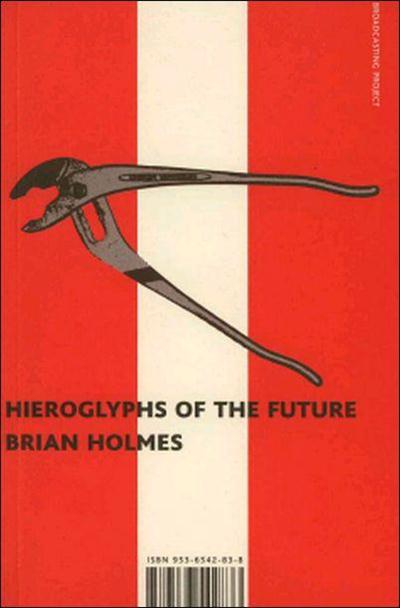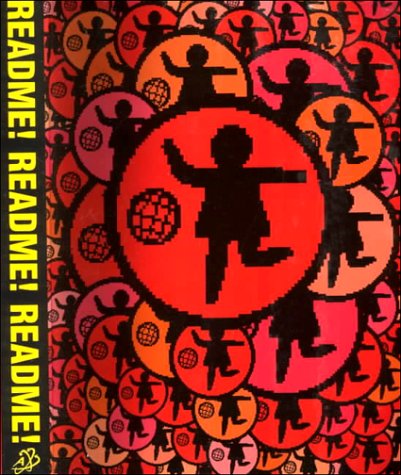Brian Holmes: Hieroglyphs of the Future: Art & Politics in a Networked Era (2003)
Filed under book | Tags: · activism, art, capitalism, critique, cybernetics, mapping, media activism, network culture, politics, social movements

“Networks redefine urban and social borders and can be interpreted in many ways according to the chosen perspective, a limited territory or the entire globe, revealing at the same time the potential and the limits of their actions. This collection of essays, which features a solid political approach intertwined with art, pushes the limits of the critique of the mobility as defined by human beings and the reconfiguration of urban space, analyzing the powers and desired contained in it. A hyperlinking of transnational forces of opposition are invited to play a strategic game coordinating their efforts for imagining future alternative and sustainable realities, through a media struggle which uses the same propaganda tools of capitalism. The collaboration with the art collective Bureau D’Etudes and the resulting maps of power produced by them are nodal, but the core of these essays are the instruments of analysis offered, which elaborate new expressions to effectively decode our contemporary world.”
Publisher Arkzin Communications / What, How and for Whom, Paris/Zagreb, 2003
Broadcasting series, 3
ISBN 9536542838, 9789536542833
294 pages
PDF (updated on 2015-4-28)
Comment (0)Networked: a (networked_book) about (networked_art) (2010, open draft)
Filed under wiki book | Tags: · collaboration, media art, network art, network culture, networks, participatory culture

In 2007, Jo-Anne Green and Helen Thorington (Co-Directors, New Radio and Performing Arts, Inc. | Turbulence.org) proposed Networked to Eduardo Navas (NewMediaFIX). Along with Sean Dockray (Telic Arts Exchange) and Anne Bray (Freewaves), they developed an application to the National Endowment for the Arts, which funded the project in 2008.
An international Call for Proposals was issued. It defined the project’s Goals and Objectives and invited contributions that critically and creatively rethink how networked art is categorized, analyzed, legitimized — and by whom — as norms of authority, trust, authenticity and legitimacy evolve. A committee of nine reviewed the submissions: four authors were commissioned to develop chapters that are now open for commentary, revision, and translation. A fifth — one of the runners-up — was invited to contribute. Networked is open to additional chapters.
Networked proposes that a history or critique of interactive and/or participatory art must itself be interactive and/or participatory; that the technologies used to create a work suggest new forms a “text” might take.
Chapters:
* Remix and the Rouelles of Media Production
* Deseriis › No End In Sight
* Ulmer › The Learning Screen
* Varnelis › The Immediated Now
* Helmond › Lifetracing
* Freeman › Storage in Collaborative Networked Art
* Munster › Data Undermining
* Lichty › Art in the Age of DataFlo
by Authors and Collaborators of the Networked Book Project.
Facilitator: New Radio and Performing Arts, Inc. (NRPA).
Licensed under a Creative Commons Attribution-Noncommercial-Share Alike 3.0 Unported license.
ReadMe! ASCII Culture & The Revenge of Knowledge. Filtered by Nettime (1999)
Filed under book | Tags: · cyberspace, internet, labour, market economy, media art, media culture, media theory, net art, net culture, network culture, software, sound recording, technology

“A compilation of writings and debates from the Nettime newsgroup and internet mailing list. This book documents the debates over emerging media technologies that are currently reshaping society. What are the liberatory potentials? Where are the points of political conflict and class struggle in this new culture? What are the pitfalls of new technology? Read Me! provides the beginnings of this discussion and an outline for what has become a continuing forum on the Net.”
Edited by Josephine Bosma, Pauline van Mourik Broekman, Ted Byfield, Matthew Fuller, Geert Lovink, Diana McCarty, Pit Schultz Felix Stalder, McKenzie Wark, and Faith Wilding
Publisher: Autonomedia, February 1999
ISBN: 1570270899, 978-1570270895
556 pages
single PDF (added on 2014-8-29, updated on 2022-12-3)
PDF chapters (updated on 2016-5-15)

